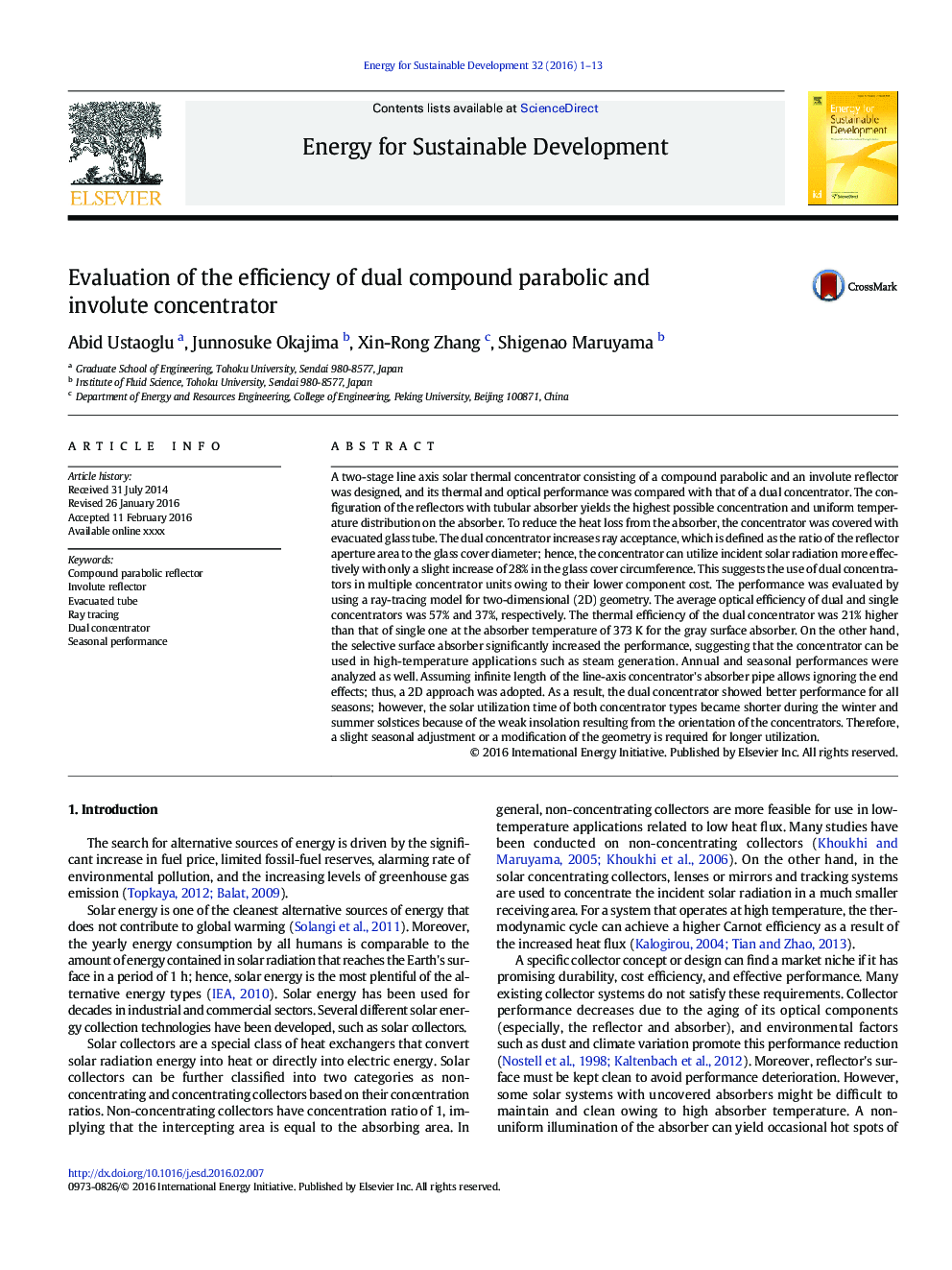| کد مقاله | کد نشریه | سال انتشار | مقاله انگلیسی | نسخه تمام متن |
|---|---|---|---|---|
| 7453823 | 1484398 | 2016 | 13 صفحه PDF | دانلود رایگان |
عنوان انگلیسی مقاله ISI
Evaluation of the efficiency of dual compound parabolic and involute concentrator
ترجمه فارسی عنوان
ارزیابی کارایی کنسانتره پارابولیک و غلطک دوگانه
دانلود مقاله + سفارش ترجمه
دانلود مقاله ISI انگلیسی
رایگان برای ایرانیان
کلمات کلیدی
موضوعات مرتبط
مهندسی و علوم پایه
مهندسی انرژی
انرژی (عمومی)
چکیده انگلیسی
A two-stage line axis solar thermal concentrator consisting of a compound parabolic and an involute reflector was designed, and its thermal and optical performance was compared with that of a dual concentrator. The configuration of the reflectors with tubular absorber yields the highest possible concentration and uniform temperature distribution on the absorber. To reduce the heat loss from the absorber, the concentrator was covered with evacuated glass tube. The dual concentrator increases ray acceptance, which is defined as the ratio of the reflector aperture area to the glass cover diameter; hence, the concentrator can utilize incident solar radiation more effectively with only a slight increase of 28% in the glass cover circumference. This suggests the use of dual concentrators in multiple concentrator units owing to their lower component cost. The performance was evaluated by using a ray-tracing model for two-dimensional (2D) geometry. The average optical efficiency of dual and single concentrators was 57% and 37%, respectively. The thermal efficiency of the dual concentrator was 21% higher than that of single one at the absorber temperature of 373Â K for the gray surface absorber. On the other hand, the selective surface absorber significantly increased the performance, suggesting that the concentrator can be used in high-temperature applications such as steam generation. Annual and seasonal performances were analyzed as well. Assuming infinite length of the line-axis concentrator's absorber pipe allows ignoring the end effects; thus, a 2D approach was adopted. As a result, the dual concentrator showed better performance for all seasons; however, the solar utilization time of both concentrator types became shorter during the winter and summer solstices because of the weak insolation resulting from the orientation of the concentrators. Therefore, a slight seasonal adjustment or a modification of the geometry is required for longer utilization.
ناشر
Database: Elsevier - ScienceDirect (ساینس دایرکت)
Journal: Energy for Sustainable Development - Volume 32, June 2016, Pages 1-13
Journal: Energy for Sustainable Development - Volume 32, June 2016, Pages 1-13
نویسندگان
Abid Ustaoglu, Junnosuke Okajima, Xin-Rong Zhang, Shigenao Maruyama,
